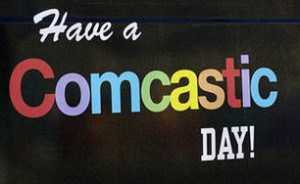Despite claims of a looming data usage crisis created by insufficient wireless spectrum, Verizon Wireless is introducing a new app that will encourage customers to find and watch streaming video on their mobile devices.
Viewdini premiers today on the Android platform, and Verizon hopes customers will use it to hunt down their favorite videos from Netflix, Hulu Plus, mSpot, and Comcast Xfinity, all from the Verizon Wireless app.
“We are just seeing a hunger for people wanting to watch video,” Verizon Wireless CEO Dan Mead said in an interview with AllThingsD. “I think this will capture the audience’s imagination.”
If customers use it to stream bandwidth heavy video on a tiered data plan, Verizon will also have the customer’s attention when the bill arrives.
Viewdini, considered one of Verizon’s “key product launches” for the year, does not amount to much on examination. The service does not host videos, it merely indexes them from other videocentric websites. The app will be exclusive to Verizon Wireless, but is not the company’s first foray in the competitive video streaming marketplace.
The Verizon Video app offers streamed video entertainment, but with a twist. Many titles offered by Verizon Video cannot be accessed while on Wi-Fi and require the company’s 3G or 4G network to watch, which counts against your usage allowance.
There is no indication yet whether Viewdini will have similar restrictions.
While Mead claims the company has several early warning indicators for customers approaching their monthly usage cap, he admits the company hopes to make additional revenue from customers who choose to exceed their allowance and buy additional data.
“We look at it as great flexibility for customers,” Mead called that choice.
While Verizon joins other wireless carriers in calling urgently for additional wireless spectrum, its marketing department does not recognize any wireless data shortage, and continues to introduce new products that encourage their customers to use an increasing amount of data, from which Verizon admits it will earn an increasing percentage of its revenue.


 Subscribe
Subscribe




